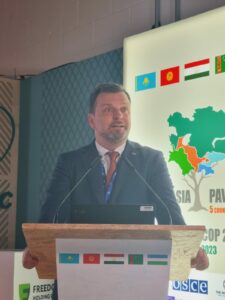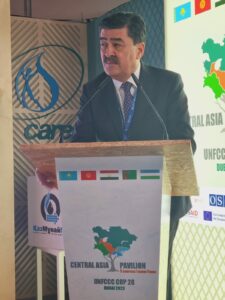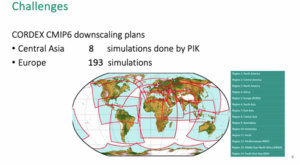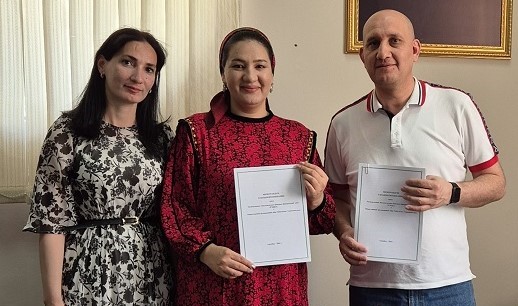The UN climate summit in Dubai has become a landmark for the countries of Central Asia. Today, the Regional Strategy for Adaptation to Climate Change in Central Asia, approved by all countries of the Central Asian region, was presented to the international community.


Christina Wegelein, Climate and Security Division, German Federal Foreign Office, congratulated the Central Asian countries on adoption of the Regional Adaptation Strategy, which will positively address national and international security issues in the face of climate change challenges.
Commenting on the significance of this event, Zafar Makhmudov, Executive Director of the Regional Environmental Centre for Central Asia (CAREC), said that this strategy provides ample opportunities for countries against the backdrop of the international community’s emphasis on solving climate problems, taking into account the regional approach.
“With challenges comes opportunity. What opportunity do we have? Two days ago, the UNFCCC COP28 Plenary established a Loss and Damage Fund. And this is a good opportunity for us. Many countries have developed national adaptation strategies. A regional approach provides an opportunity to adapt at the regional level and enhance cooperation. We have our strategy – a clear plan for the regional adaptation of our economies to the consequences of climate change,” Zafar Makhmudov said.
Представители всех стран Центральной Азии были едины в необходимости реализации Региональной стратегии по адаптации к изменению климата. Региональная стратегия по адаптации к изменению климата демонстрирует понимание правительствами стран ЦА общей проблемы изменения климата, которую необходимо решать на уровне региона и вырабатывать адаптационные меры.
Последствия изменения климата по-разному проявляются в странах региона. В Казахстане изменение климата приводит к потере флоры и фауны, огромных площадей земли из-за деградации почвы, страдает сельскохозяйственный сектор. В Таджикистане 80% всех негативных климатических воздействий связаны с водными ресурсами: сели, паводки, наводнения. В настоящее время происходит из-за водных ресурсов. В настоящее время Таджикистан разрабатывает Национальную водную стратегию до 2040, в которой также будет учитываться и региональный подход.




Несмотря на высокую климатическую уязвимость Центральноазиатского региона, международное научное сообщество не располагает научно-исследовательскими данными, дающими полное и объективное представление о реальной ситуации в регионе.
По адаптационному индексу ND-GAIN на 2022 год Центральноазиатский регион менее уязвим и имеет низкий уровень готовности к изменению климата, несмотря на масштабные адаптационные действия, предпринимаемые странами – принятие национальных адаптационных стратегий, реализация ряда мер по адаптации и митигации.

Bijan Fallah of the Potsdam Institute for Climate Impact Research (PIK) demonstrated that the PIA climate change scenario modelling for the European region offers 193 simulations, while for the Central Asian region, it offers 8 simulations.

It indicates that the region is poorly studied and underrepresented in the international scientific community. Meanwhile, financial flows from international financial institutions are primarily directed to the country’s most vulnerable to climate change, according to research data such as the IPCC.
The event was organized within the framework of the GIZ Green Central Asia Initiative and CAREC.
Video recording of all events on December 2, 2023, at the Central Asia Pavilion – https://www.youtube.com/watch?v=dE7g7yOMUX0
Central Asia Pavilion “5 countries – 1 region – 1 voice” is organized by the Regional Environmental Centre for Central Asia (CAREC) in cooperation with the Governments of Central Asian countries under financial support of the GIZ, OSCE, the World Bank, USAID, the European Union, and the Food and Agriculture Organization of the United Nations (FAO).



